What is a softboard?
Mar 06, 2023
Soft boards have become a staple in water sports globally since their inception in 1971. They are great fun equipment any surfer should add to their board collection. In fact, every surfer should have one because they are the one thing above everything: FUN! After all, isn't that the reason we started surfing?
Every water sports lover uses soft top surfboards, from beginner surfers to world champions such as Jamie O'Brien and Mick fanning. Most surf schools use soft surfboards as their go-to teaching boards. For beginner surfers, soft top surfboards offer a fun, cost-effective but safe, and stable way to learn to surf. For experienced surfers, foam surfboards provide a fun and secure way to catch small summer waves.
What Exactly is a Soft top surfboard?
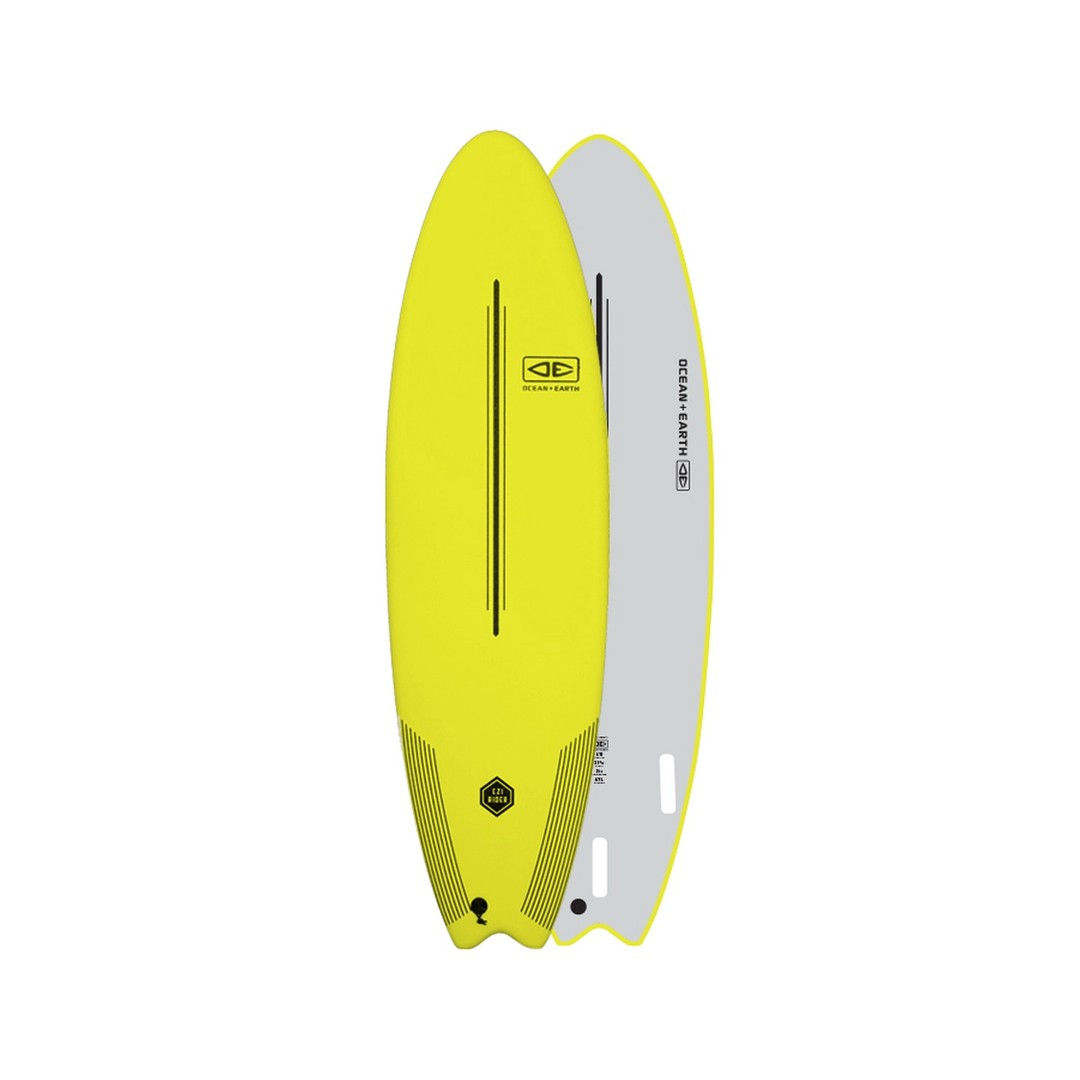
Just as its name describes it, a soft top surfboard is a surfboard made from foam. Its deck top is smooth because it replaces the epoxy or hardened fibreglass top layer with a soft EVA ( Ethylene-Vinyl Acetate) sheet.
Traditional surfboards, aka hard top surfboards, are made with either an expanded polystyrene (EMS) or polyurethane (PU) foam, then covered with an epoxy resin or polyester that creates a hardened surface.
The EVA top layer on foam boards combined with compressed EPS foam core makes them lighter, less vulnerable to rot, float better, and stiffer to ding than fibreglass board. Moreover, the soft deck top makes it easier for comfortable paddling.
Also, unlike epoxy surfboards, foam surfboards don't require additional material like wax to prevent slippage.
Softboards come in various shapes and sizes. For instance, the Bay Sports Ezi-Rider collection goes as small as 6'6". But despite their sizes, all soft surfboards are lightweight, more buoyant and more stable than most epoxy or fiberglass boards of the same size.
We don't mean that soft top boards are better than traditional surfboards, but they definitely give hard surfboards a run for their money. For starters, they are way cheaper while still getting the job done.
The History of Soft Surfboard
Soft top surfboards were invented from the 1950s foam core surfboards which were still wrapped in fiberglass. It wasn't until 1971 when Tom Morey, a surfing inventor and mathematician, accidentally invented the Boogie board with an offcut polyethylene foam wrapped in newspaper. He then named his invention the Boogie Board after the blues music he enjoyed immensely, "Boogie Swung."
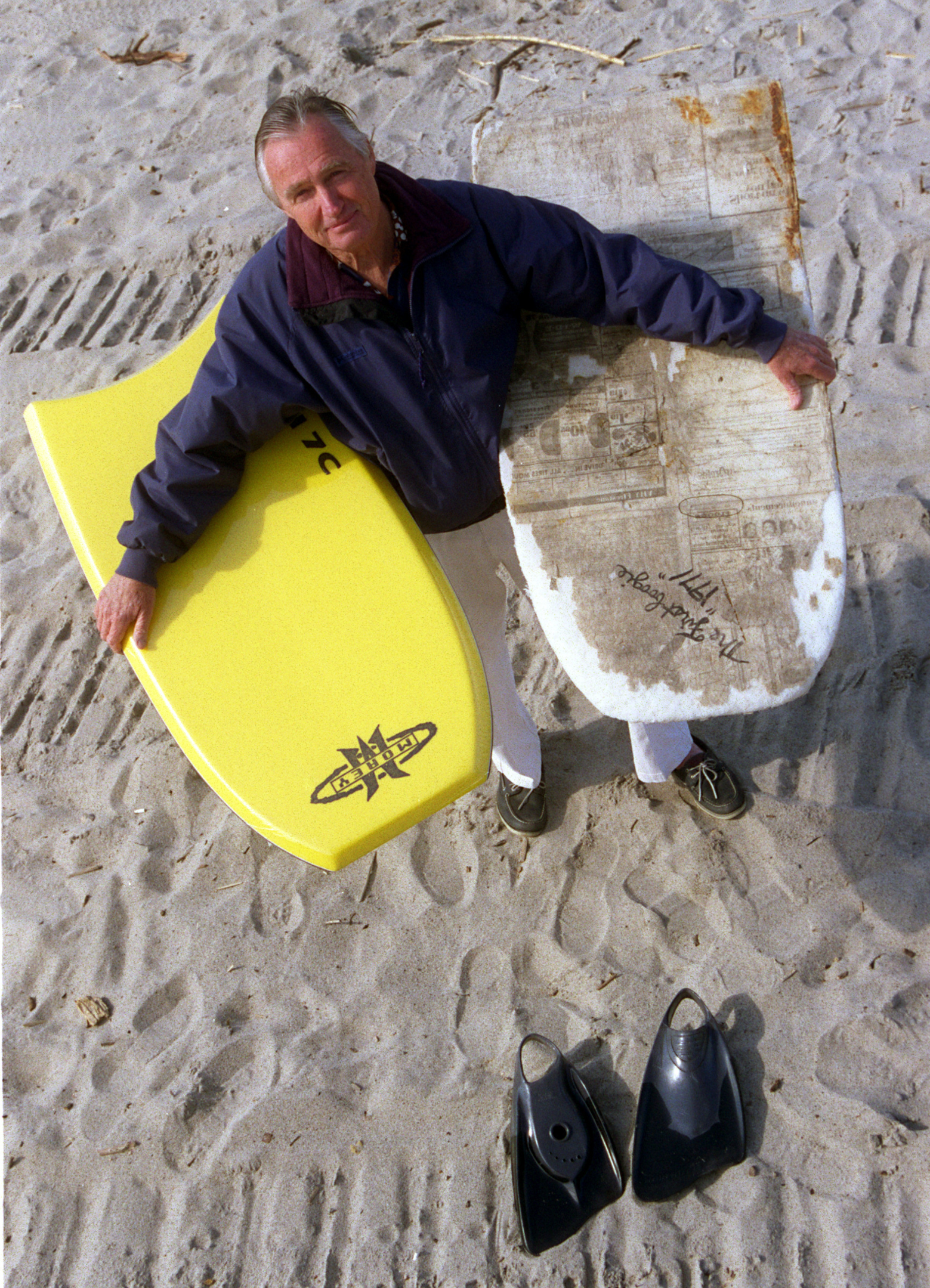
The boogie Board removed a lot of barriers for beginner surfers. The skills needed to surf a wave became a lot lower. The soft, small, lightweight board was much safer than the large, heavy hard boards used by surfers then.
Soon, the Boogie Surfboard soared in popularity, but most surfers looked down on it. However, many people appreciated the soft top construction despite the hostility towards the new wave-riding style.
Now, there was a way to surf onshore breaks and busy beaches where regular surfboards were dangerous and at risk of damage.
After the first board with a soft top, for over 30 years, there were countless attempts to develop a stand up soft top surfboard, but none made it to the mainstream. This was because the construction methods resulted in poor performance and soft top surfboards with limited appeal.
It was not until 2006 that the then-former manager of the boogie board brand collaborated with AGIT Global, the manufacturers of Boogie Boards, to make the first stand up soft top board for surfers. The new product design expanded plastic and polystyrene foam into a full-sized soft top surfboard and featured the sandwiched body design. They called their new creation Wavestorm.
So many innovations later came the short boards, which were considered ridiculous and a threat to all that was sacred about surfing. But now is the joy of surfing newbies and professionals alike.
The Outstanding Features of Soft Top Surfboards
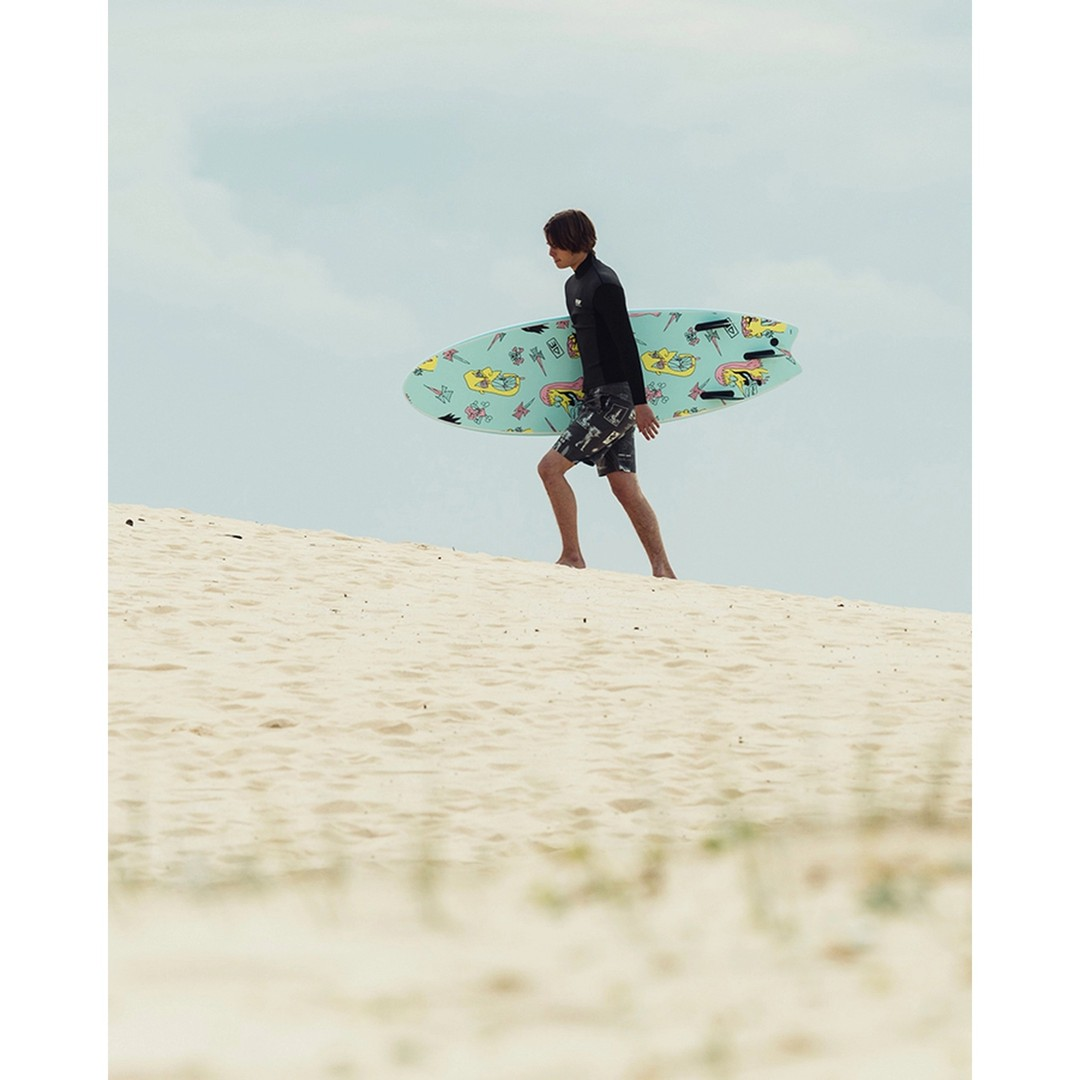
Because there are numerous types and manufacturers of soft top surfboards, some features don't cut across all the boards. Here are the features that are prominent in all soft top surfboards.
-
material
Depending on the brand, the foam surfboard is coated with a soft material, EVA or IXPE. Compared to fibreglass or epoxy surfboards, their surface is softer and absorbs water since it's a foaming material.
-
buoyancy
Generally, foam boards are designed to be thicker than hard surfboards; therefore, their capacity is much larger than a traditional surfboard of the same length. Moreover, because its made from a lightweight material, it has stronger buoyancy than a hardboard of equivalent length.
What advantages does a softboard have over a fibreglass board?
If you're in the market for a new surfboard, foam boards offer many advantages you might like. Here are the reasons you should why you should opt for a foam surfboard:
-
Beginner-friendly
Softboards are made from foam material which is very soft, offers more stability and buoyancy than epoxy surfboards, and is therefore recommended for beginners. More stability and buoyancy make it easy for those learning to surf to paddle, ride waves, and stand up. What's more, the smooth surface of these boards helps reduce injuries when surfing.
-
Safety
Traditional fiberglass or epoxy surfboards can be dangerous, especially for first-time surfers. For instance, if you fall off your board and it hits you or someone else, it may cause unprecedented injuries. Softboards are designed with a soft surface that helps reduce the risk of injury during surfing.
-
Family-friendly
soft top surfboards are versatile. Everyone can use them to catch waves of different magnitudes. What's more, they can accommodate anyone, from kids to the elderly. You can use bigger softboards to ride tandem for more fun!
-
Affordability
Soft top boards are much less expensive than fiberglass boards. This can be super beneficial, especially if you're starting your surfing journey and don't want to spend a lot of money on a board until you're sure you're into the sport.
-
Hard-wearing
Soft tops are generally less susceptible to damage than any hard surfboard on the market. They'll bounce off other surfboards or rocks during a collision. You can even punch and kick your soft top surfboard as much as you want to no effect on the board or yourself.
-
Fun! Fun! and Fun!
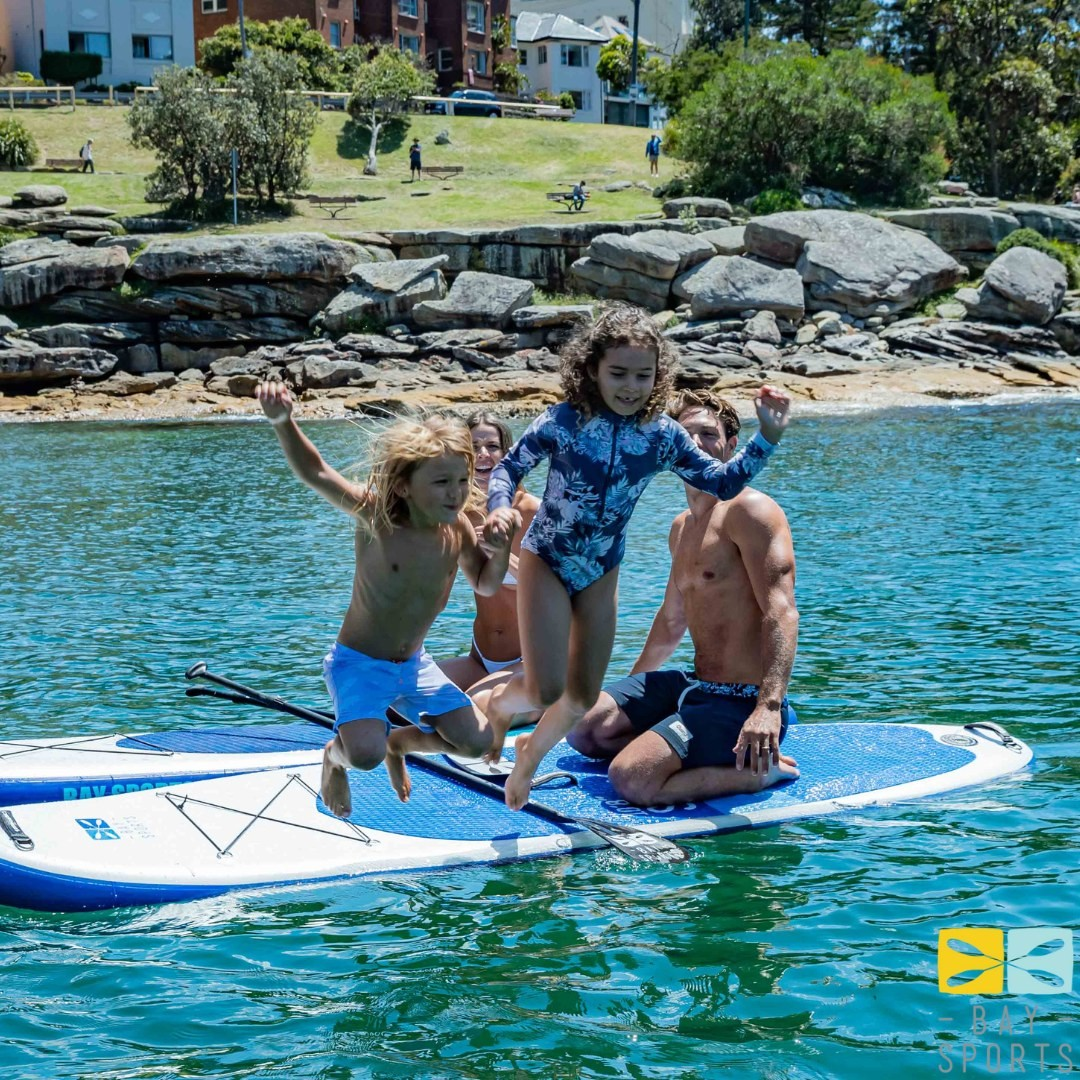
"Not a picture showcasing surfing, but you can have equal fun on a soft surfboard"
When it comes to having fun, a foam surfboard is the mother of all water sports equipment. Besides being a fun ride, they are also perfect for riding small waves and learning and practicing new moves. Moreover, soft tops are perfect for most surfing spots, as they can handle different water conditions.
Is a soft board the same as a foam board?
If you are a surfer who went to surf school, chances are you rode a softboard, also known as a foamie. A soft board, aka foam board, is commonly used to teach beginners.
Are softboards good for beginners?
As we've mentioned, soft tops are the better option for beginners. Since you're just starting your surfing adventure, it's inevitable that you'll fall off your board now and then before becoming a skilled surfer.
A soft top board will save you money ultimately. You'll avoid many injuries when learning to surf on it. Once you're an intermediate surfer, you can choose to upgrade to a hard surfboard of your choice.
" Pro Tip: Stay away from any long board or any board shorter than the funboard until you're comfortable surfing bigger waves."
Is it worth buying a softboard?
Soft tops offer much more than what meets the eye. Surf schools or beginner surfers can enjoy using foam surfboards as a versatile board for everyone. And we mean everyone, beginners, intermediate surfers, and advanced surfers. These boards are the current trend at the beach. It's common to see skilled surfers enjoying waves while on a soft top.
For beginners, you can choose a simple foam surfboard pricing anywhere from the lowest to the middle-priced to experiment, enjoy and worry less about fall-offs while you learn to paddle till you ultimately catch your first wave. Foamies provide plenty of volume for stability and can even be used on flat water.
An Intermediate surfer can purchase softboards in the classic shortboard, fish, step-up, or longboard styles. The options are endless regarding the shape, size, and style of high-performance soft top surfboards.
What are the sizes of foam boards?
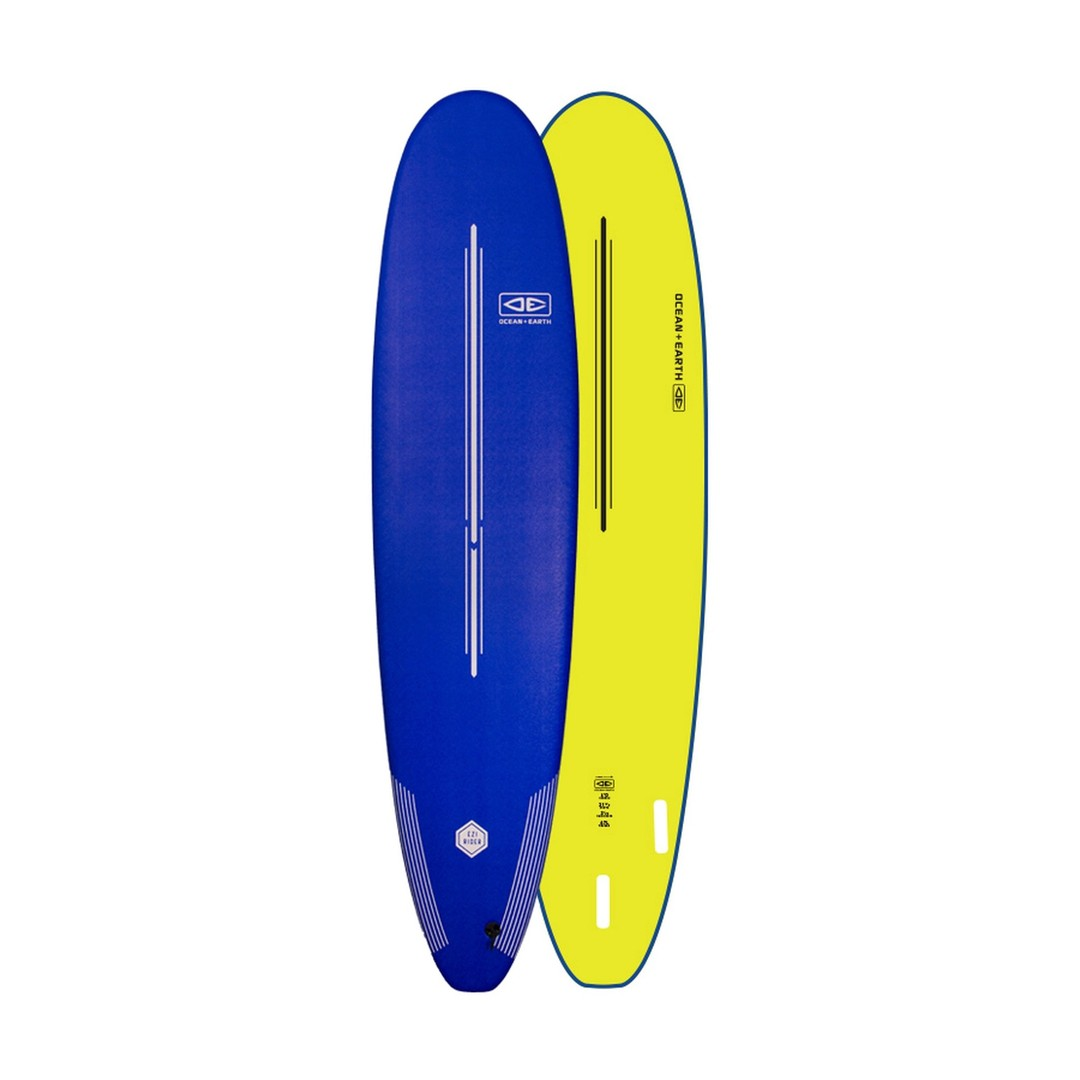
Most softboards typically range from 6 to 8 inches in width. There are also boards with great volumes. Standard soft boards have capacities ranging from 7 to 40 litres. 8-inch soft surfboards are the common size available in the market, and most surf schools prefer to use boars ranging from 8 to 10 inches in size.
What are new softboards made of?
Since its inception, softboards have changed immensely. Technological advances have allowed new, better designs that not only perform better than their predecessors but also have new fun features.
New foams are created from an EPS foam nucleus using CNC machines. This new technique is almost universal for most epoxy boards.
Difference between the traditional foam board and the new epoxy surfboards
Unlike the initial softboard ranges, the new soft surfboards have stiffer surfaces that resemble a fiberglass board. These new boards don't bend out of shape and also come with FCSS II connectors. Designed to offer the best surf learning experience, the new boards are the current trend you need to thrive in your surfing journey.
In Which Type of Waves do Softboards Work?
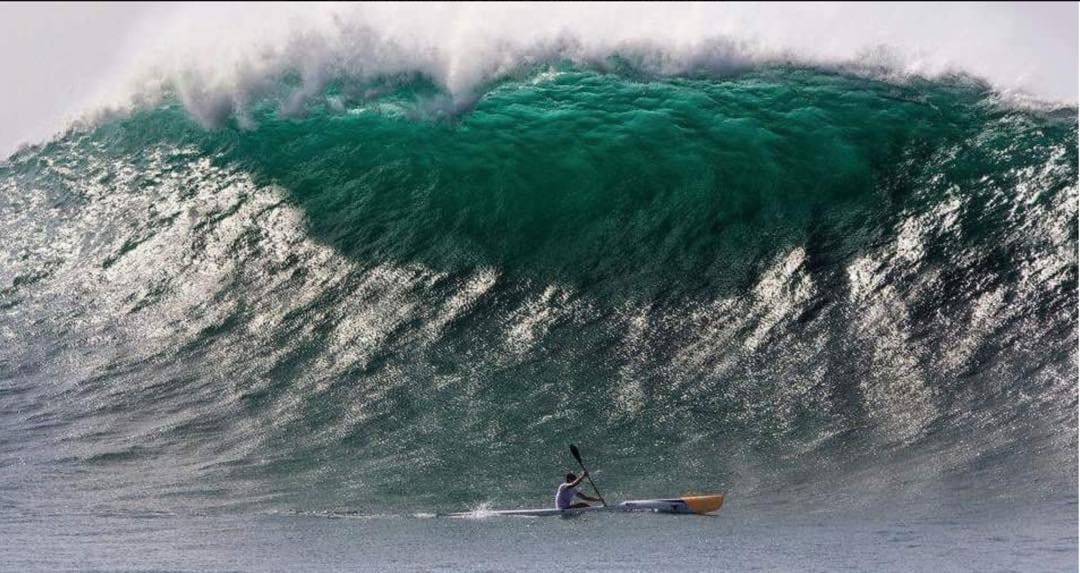
"Imagine riding this huge wave on your soft top surfboard. Fun, right?"
Softboards are designed for smaller waves, typically from 1m to 5m. They are perfect to use in shallow near the beach parts of the ocean. Epoxy soft top surfboards are best for waves between 1 m to 5 m and are ideal for surfing crumbling waves and having fun.
Because soft top surfboards are easy to control and maneuver, they are ideal for experienced surfers and beginners alike.
Surf Hard, Stay Soft
Easy to surf and great for small waves and even calm water, softboards are everything you need to safely surf in the water while having the best time of your life. It's the ultimate school for beginners and water enthusiasts and is here to stay. So why are you waiting? Grab a soft top surfboard and begin your surfing adventure today!

